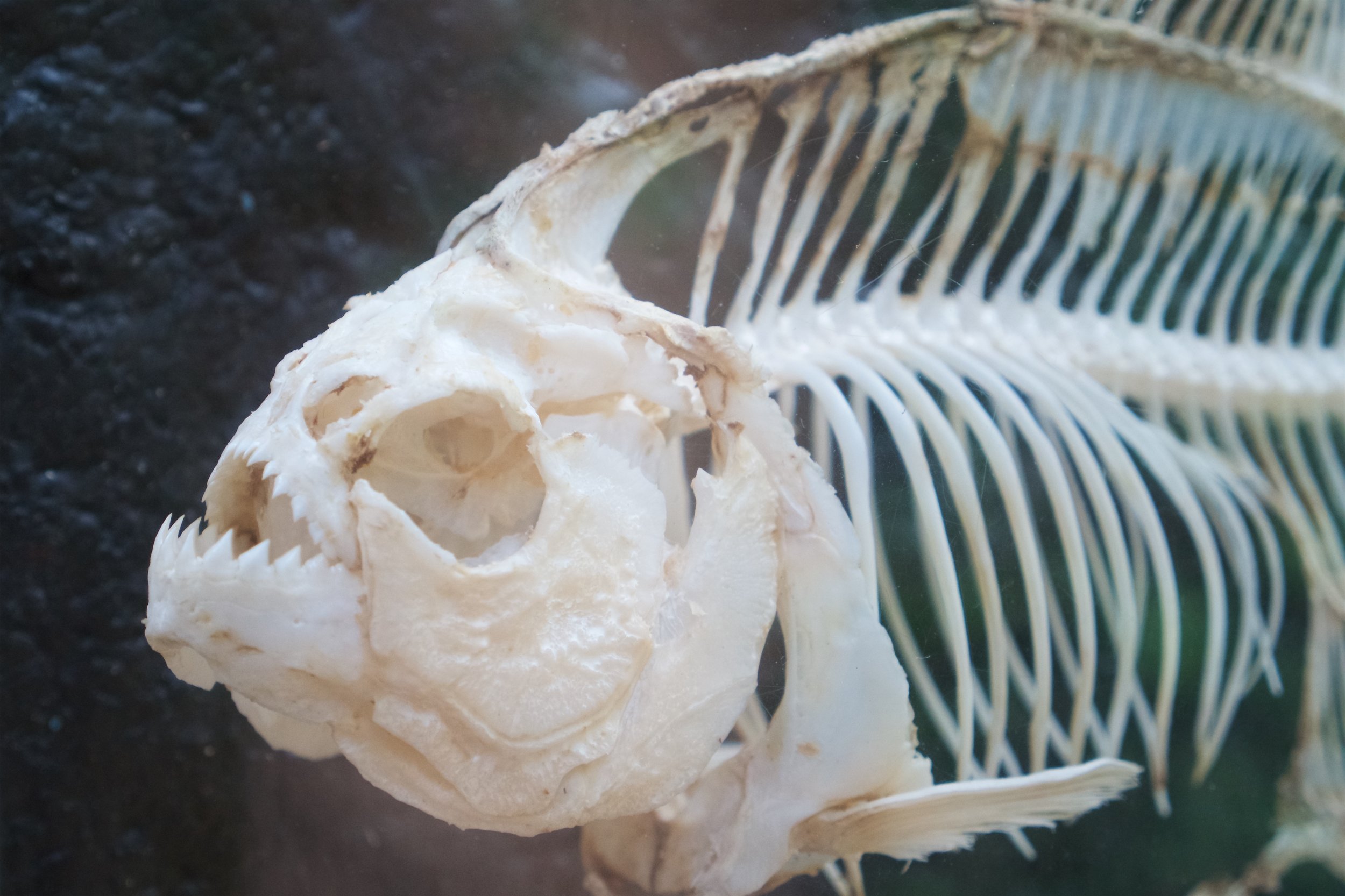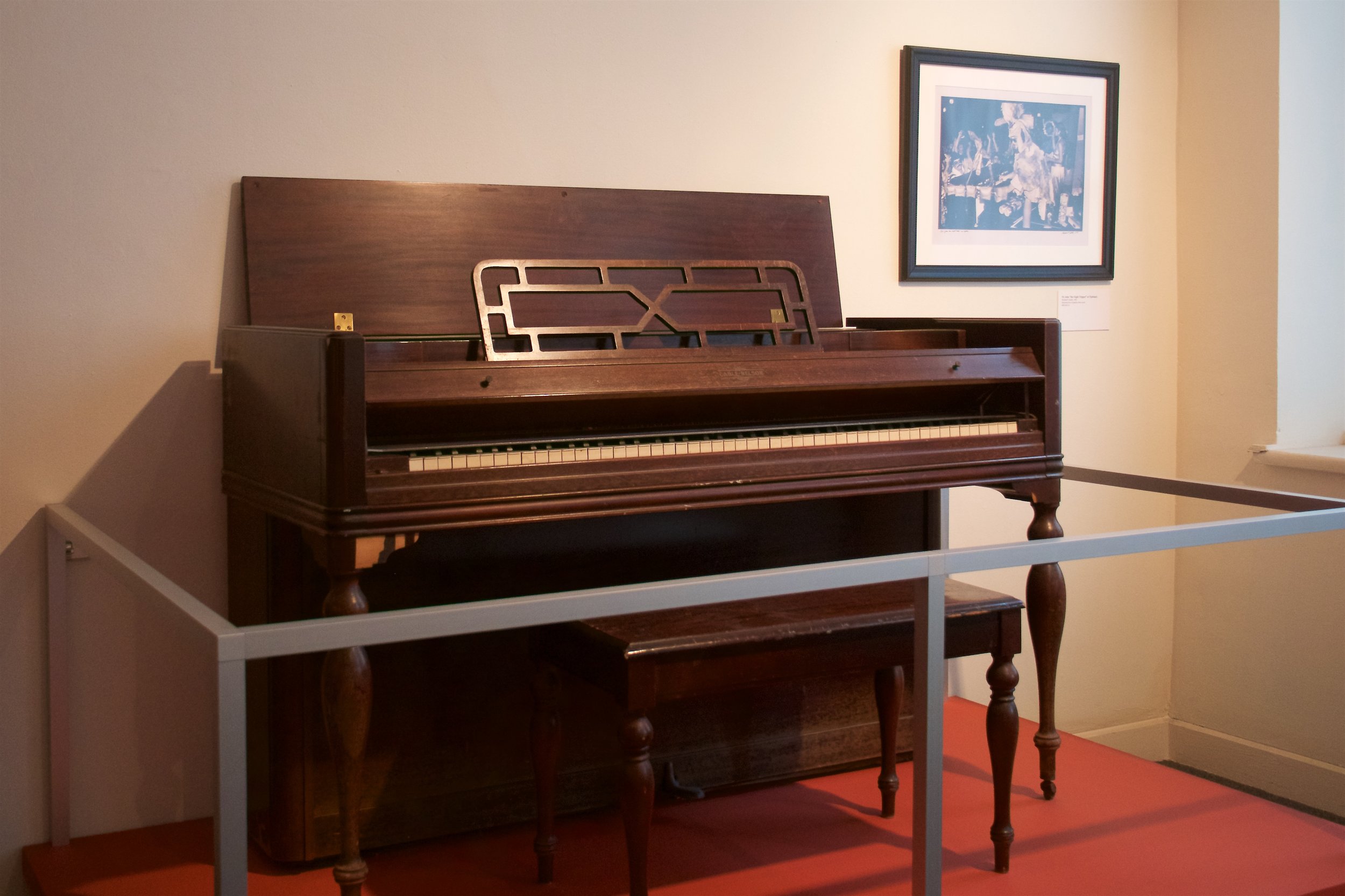New Orleans, Thursday 25-Oct
Melody had a full day at the conference, and I had a full day of playing tourist. I had planned to spend a good chunk of the day at the National WWII Museum but ended up going to the Aquarium, doing a walking tour of the French Market, and walking a bit from Loyola back to Carrollton.
This marked the halfway point in our vacation, and since we wanted to pack as lightly as possible, it was laundry day. Melody headed out for her conference while I finished that up. It was a good day to get a late start since it poured all night and was still raining by the time I left. By that time, it was very humid and continued to be through the day.
Since it was supposed to be raining, I had planned on going to the National WWII Museum. I took the streetcar to Lee Circle and walked a couple of blocks to the museum, but saw that there was quite a line to buy tickets. I looked online for tickets, but didn't see right away where to purchase them; figuring I would need lunch not long after I got inside, and not being sure how much time I would want to view everything, I decided to do that museum on Friday and decided that Plan B was to go to the Aquarium.
I saw that I was very close to the Auction House Market which had a food court, so I went there and had a cup of seafood gumbo and a cut of baklava. Well fed, off I went.
Audubon Aquarium of the Americas
It wasn't a very far walk from the WWII Museum to the Audubon Aquarium of the Americas, and I once again purchased my ticket on my phone just before entering. I was also able to go past the short line, going straight to the entrance.
Seems that every aquarium now has a tunnel you walk through to see various fish swimming overhead and around you, especially with showy swimmers such as rays and sharks; this one had rays. As with the Insectarium the day before, there's definitely a preferred path through the building, and after the first exhibit, you're sent to the second floor, returning to the first after you've reached the other end of the building.
Some of the more unusual items were a white alligator, which, rather than being an albino, is leucistic, so it has little pigmentation but does in its eyes. Apparently, in addition to being rare, the only leucistic alligators are found in the southern Louisiana area, but it's not known why.
The hermit crabs were also quite cute, scurrying around in their borrowed shells. There was also a wall-sized tank of lookdowns, flat silvery fish which are so named because of their downturned eyes and pout-shaped mouth.
They have an area where you can walk among all sorts of parakeets, but the exhibit was closed for the day. Ah well, at least I could see a bunch of them while getting some ice cream.
I tried to time getting out of the aquarium to coincide with when the Steamboat Natchez was due to sail. As I stepped out of the building I saw that the Paddlewheeler Creole Queen had just left its dock, so I got to see that go by. I walked further down and got a pretty good look at the Steamboat Natchez as passengers were boarding, which they seemed to be doing nonchalantly even though it was quite a bit past sailing time. The boat eventually did leave, and it used modern directional engines to push away from the dock, then fired up the paddlewheel to get going.
French Market
Looking for the next thing to do, I realized I was right near the entrance to the French Market, so I brought up the French Market Walking Tour and began.
The first stop was Café Du Monde. Apparently, that particular café has been open since 1862. While there are several locations, the majority of them are in Japan. I didn't get more beignets, but I did walk around the back to see them being made.
That back lane is called Dutch Alley after Ernest “Dutch” Morial, the city's first African-American mayor.
Food is a running theme for this particular walking tour. In addition to Cafe Du Monde, the tour points out Tujague's (where the grasshopper was invented, as well as the first place to serve brunch), Evan's Creole Candy Factory where you can see pralines being made, and Central Grocery where the muffuletta was invented.
Past Latrobe Park is a covered area for a farmers market and flea market. It was about one third filled that particular day, but it seems it would be much busier during the summer.
At the end of the French Market is the Old U.S. Mint, which now houses a museum and the Jazz Museum.
Old U.S. Mint
The New Orleans Jazz Museum at the U.S. Mint is the fourth Louisiana State Museum in New Orleans (the fifth, Madame John's Legacy, is closed for restoration.) In addition to the Jazz Museum on the second floor, the first floor is dedicated to the history of the mint.
The New Orleans mint was the only one to have printed both U.S. and Confederate coinage (as well as coins for the Republic of Louisiana) and was the only one to reopen after the Civil War. The building was used as a federal prison during Prohibition and became part of the Louisiana State Museum in the mid-1960s.
Many coins minted at the site were on display, as well as some which were recovered from the sunken S.S. Republic, which was carrying much-needed supplies and a fortune in coins to help revitalize the southern economy after the Civil War. On its way to New Orleans from New York in 1865, the sidewheel paddleboat ran into a hurricane which had already caused a lot of destruction in Cuba and Florida. Passengers and crew got into lifeboats, but the Republic sank. The ship wasn't found until 2003, and interestingly enough, coins were recovered which bore the “O” mark, indicating they were minted in New Orleans.
Getting to the Jazz Museum upstairs, you're met with a thirty-five foot mural by Xavier Gonzales depicting Dixie's Bar, featuring dozens of prominent entertainers such as Lena Horne and Benny Goodman.
I don't know much about Jazz, so many of the names in the exhibits weren't familiar to me. I did gravitate towards interments, such as Professor Longhair's electric piano from the 1970s, Clarence “Gatemouth” Brown's fiddle which was found near his home after Hurricane Katrina, and Fats Domino's white piano.
East Carrollton
For the rest of the afternoon, I decided to check out Loyola and Tulane. The streetcar was pretty close to the Old U.S. Mint, so I crossed the street, went through the break in the floodwall, and joined the other tourists waiting. It was an unusually long wait, so the cars must have gotten piled up at one place. It finally arrived, so I took a seat for the short ride over to and a bit along Canal Street.
When I went to the stop for the St. Charles streetcar, there was a large group of tourists waiting. Another long wait, and when the streetcar came, it took a while for all the passengers to get off. Once that happened, the operator indicated that he was going out of service, but there was another one right behind him. That car started letting passengers board, but many of them had questions or trouble with the fare machine; unfortunately, those of us with passes didn't have room to go around them, so the line was also very slow. Settled in a seat at the back of the streetcar, we finally were on our way, helped in part by yet another car which arrived, causing the rest of the people to go to that one.
As we were going along St. Charles, there were several people who wanted to get out the rear door, but some were confused that the doors didn't open. Others tried pushing but the door didn't move. There was a guy sitting on the seat at the very back (where the conductor sits when the streetcar is going in the other direction) who would stand and show that you open the door while pushing really hard. Eventually, that guy got off, and someone else sat in the seat. He then took over duties of helping people get out the rear door. I guess it's an unofficial duty of sitting there.
We got to Loyola, so I got off the streetcar and started looking around. It seems they know that people will center themselves on the front lawn and take a picture, so there's a Loyola sign in the lawn set up so perfectly that the photo looks just like a postcard. I succumbed.
The Loyola campus isn't very large but the architecture is very with the brick buildings and breezeways. Tucked just behind is a lawn area with crisscrossing paths surrounded by newer-looking buildings.
Right next door is Tulane University, but there were several signs which made me dubious whether they liked visitors walking around the campus, so I just looked from the street.
I took a side street on the way back to our room and happened upon the Carrollton cemetery, which takes up two non-contiguous blocks. There were fewer of the really ornate tombs, which made it easier to get a sense of the whole cemetery since you could see all the way across.
Back to the room, where I dropped off my stuff, then went to the store to pick up groceries and something for dinner. It was an uneventful evening, and Melody arrived after her dinner with other German speakers.
































